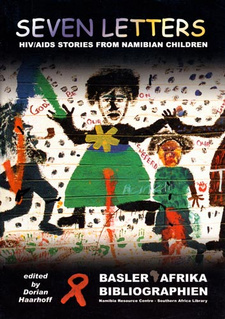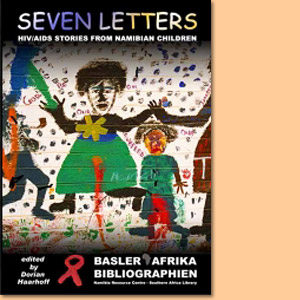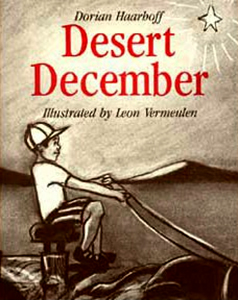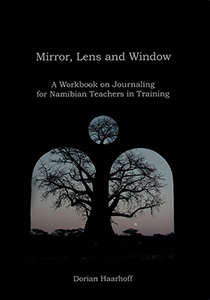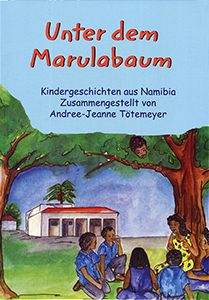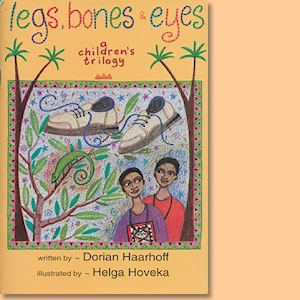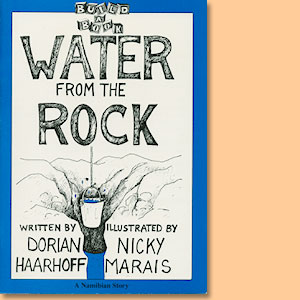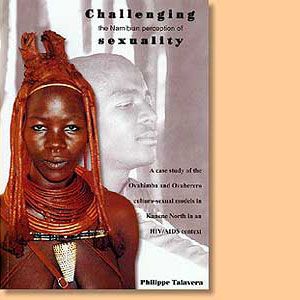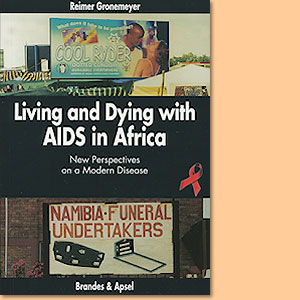Seven Letters. HIV/AIDS Stories from Namibian Children, by Dorian Haarhoff
Seven Letters, edited by Dorian Haarhoff, tell the stories of Namibian children infected by or in conflict with HIV/AIDS.
Preface: When all seems lost, we can begin again.
(The Healing Art of Storytelling by Richard Stone.)I have learned that stories are powerful. You can hide the positive in your heart and take it out when you are scared or broken-hearted. Stories give you a way of talking about your problems. (HIV/AIDS caregiver)The Context: Seven Letters, HIV/AIDS Stories from Namibian Children arises from writing workshops held at the Windhoek College of Education during 2006. The Carl Schlettwein Foundation in Basel (Switzerland), so active in Namibia, sponsored these workshops and this publication. The programme involved teaching writing skills to more than a hundred teachers in training. The student teachers then needed to pass these skills on to school children in the course of their practice teaching. This volume features some of these stories. The title comes from the first story in the collection where parents name their seven children after the seven deadly letters HIV/AIDS. Other stories show the human range of responses to the 'killer insect' - loss, death, suicide, yet also courage, resillience and hope. Feedback from the students indicated that they were not used to writing for self-expression. Many faces reflected the question, "Is my story safe in this context?" The writing in this volume is about process rather than product. Yet some stories in this collection have a strength, depth and presence about them. Some children wrote autobiographical and fictional stories around their experience of HIV/AIDS - their daily reality.
As South African writer, Eksia Mphahlele and other writers have observed, the line between autobiography and fiction is thin. Our minds do not distinguish between imagination and experience. So, in imagining a story, lies the possibility of healing and finding new ways of responding to challenging situations. Given the sensitive nature of the HIV/AIDS theme that features in these stories, we have chosen to present them anonymously. We have changed names in stories to protect children. The Last Section of the book, Student Teacher Reflections, offers some teacher-in-training reflections on the process, both as a participant at the workshops and as a teacher in training in the schools. I facilitated the workshops. Two lecturers at the College, Joseph Mukoroli and Susan Alexander, greatly assisted the process.
Writing our Stories
We process our lives as a story. Writing stories is about remembering as opposed to dismembering so they help us reconstruct our lives. Writing a personal story can be part of the healing process. Writing involves the whole person. Working creatively with the symbols of story helps us look at our lives and make changes in attitudes or circumstances. This process is linked to narrative and play therapies and opens us to psychological, social and spiritual healing. Writing a life story provides encouragement and hope - offering us maps of unexpected outcomes that we can own. Stories are about new beginnings.
Story Structure
I introduced the students to the idea of story structure. One pattern for example, involves the 5 P's - person/people, a place, a problem, a plan, a possibility. We related this to an actual story of an AIDS worker. She (person) works in her rural community (place) faced with an AIDS pandemic. (problem) She responds through support for children (plan) and brings hope through starting a drop-in centre for orphans. (possibility) Students created a variety of stories based on this model. I believe that listening to stories - stories of monsters, of creativity and courage in response to challenges - and the identification with characters and situations, helps us process our issues. Hearing stories also assists the writing of them, for unconsciously the listener absorbs via osmosis the elements of literature - character, motivation, life interest, structure, irony, story tension.
A published story is a confirmation of a life that is valued. Giving a voice to children who have suffered and helped others links all people living with HIV/ AIDS (PLWHA's). It can also build a bridge between the children who feature in this book and others elsewhere who are living with the same challenges. The HIV/AIDS crisis often feels overwhelming. How do we turn our faces towards it? I am reminded of the story of a child who finds thousands of starfish washed up onto a beach. He picks up one and throws it back into the ocean. An adult passing by remarks, "You can't make a difference." In response, the child gathers another starfish and hurls it into the sea, shouting, "I made a difference to that one." I trust that these stories will make a difference.
This is an excerpt from the book: Seven Letters - HIV/AIDS Stories from Namibian Children, by Dorian Haarhoff.
Book title: Seven Letters. HIV/AIDS Stories from Namibian Children
Editor: Dorian Haarhoff
Publisher: Basler Afrika Bibliographien
Basel, Switzerland 2006
ISBN 978-3-905758-01-6
Softcover, 15x21 cm, 95 pages, illustrations)
Haarhoff, Dorian im Namibiana-Buchangebot
Seven Letters. HIV/AIDS Stories from Namibian Children
Seven Letters tells the stories of Namibian children infected by or in conflict with HIV/AIDS.
Every December. Namibian Christmas: Stories, Reflections, Poems
Many Namibian authors have contributed to the book Every December. Namibian Christmas: Stories, Reflections, Poems.
Desert December
"Desert December" is a Christmas story about a Damara boy and his travel to his mother. Nicely narrated and illustrated story from Namibia.
Mirror, Lens and Window: A Workbook on Journaling for Namibian Teachers in Training
Mirror, Lens and Window: A Workbook on Journaling for Namibian Teachers in Training arises from a sponsorship with Basler Afrika Bibliographien.
Unter dem Marulabaum. Kindergeschichten aus Namibia
'Unter dem Marulabaum' ist eine Sammlung einfacher Kindergeschichten aus Namibia.
Legs, Bones and Eyes. A children's trilogy
These three stories for children are about rites of passage
Water from the Rock
A young boy and girl in Namibia find a hidden source of fresh water near their village
Weitere Buchempfehlungen
Challenging the Namibian perception of Sexuality
Ovahimba and Ovaherero cultural-sexual models in Kunene North in an HIV/AIDS context

